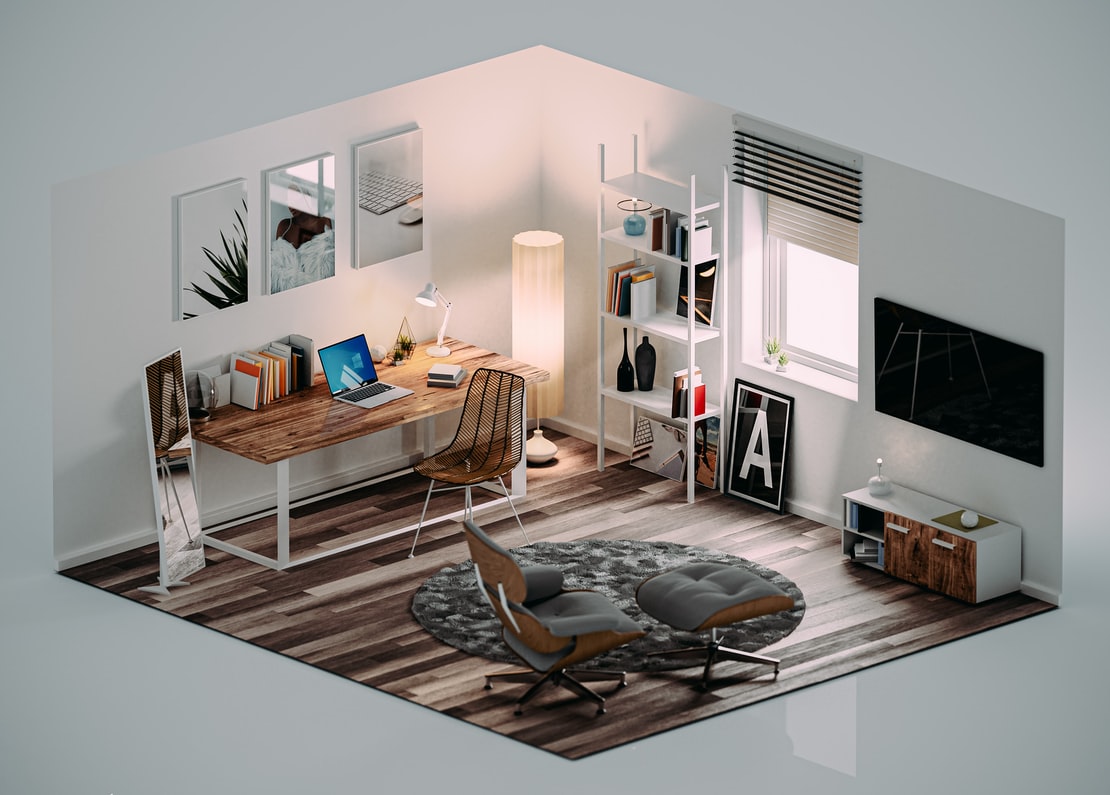How To Sell Architectural Projects With CGI?
In architecture, after long hours of elaborate planning, complex problem solving, and incessant sketching, finally comes the culmination in the form of a presentation that determines the fate of the whole project - a to be or not to be. If the client likes what they see, the project will be put into motion; if not, it might be shelved.
In the past, architects depended on still reference photos, miniature physical models, and their own speaking skills to charm the investors, making the presentation one of the biggest challenges in their career. However, technology is revolutionizing the way of presenting designs with the implementation of computer-generated imagery (CGI).
The usage of CGI allows creating a 3D image of the project, so the clients no longer have to make a decision based on description and imagination; now they have a full, realistic picture of the design, making them more likely to accept the project. With CGI, the design speaks for itself. To anyone who's wondering, here's how the tool helps to sell an architectural project.

CGI Shows the Scale of a Building That Isn't Here Yet
The main goal of the Architectural Presentation for Builders and Architects is to sell a building that isn't there yet. For the client to accept the project, they have to understand what exactly they are purchasing. An elaborate description of what they can expect and a few drawings of the fragments of the building are not enough to create a comprehensive picture in their mind.
What they need is realistic visualization that will make them understand the scale and dimension of the space. The easiest way would be to see the building in person, but as it's non-existent, there's a need for a tool that allows just that.
With CGI, computer animators can create a 3D space in accurate scale that reflects the location of the future building. With a match between the digital and real world, the client has fewer doubts about the project, making it more attractive.
CGI Offers a Walkthrough
While presenting the project, it's important to show the whole building with its interior in a comprehensive and seamless manner. Computer-generated imagery introduces movement into the still pictures, transforming the presentation into a walkthrough of the future building. While moving through the rooms and rotating the picture, the client gains further insight into what the space will look like in reality.
What is more, it's possible to highlight the finer details which can be a decisive factor in the client's decision. Whether it's modern light fixtures or ornamental door handles, the presentation can zoom in on those details, presenting them in different angles.
CGI Can Set the Mood
While presenting the design, it's crucial to appeal to the emotions of the client. If they fall in love with the idea of this particular building, they will fight in order to bring that vision into reality. It can be achieved by implementing visual storytelling techniques that include the use of camera movements, special effects, music, text, etc.
Visual storytelling allows creating a particular atmosphere of the project that will help the client imagine how they will feel in the future building. If the property is intended for residential use, implementation of light color and soft light in the presentation might evoke a calm mood that would sway the client to accept the deal.
CGI Creates an Immersive Experience
The success of the project depends on the ability to entertain and impress the client. However, they might become weary when presented with a lot of boring content. Though the project in itself may be good, the negative feelings may influence the final decision.
With CGI, it's possible to present the information in a way that will engage the audience. Moving pictures offer more entertaining value than stationary images, so it's crucial to use them to grab attention. Aside from offering a walkthrough that already offers significant immersive value, it might be a good idea to show important numbers as infographics and include them in the actual video.
CGI Demonstrates the Project's Surroundings
As most people care about the view from their windows, it's crucial to include the surroundings of the project. While it's possible to take pictures or draw simple examples of the scenery, CGI offers a more accurate execution as animation specialists may create a model on the basis of video footage taken by a drone. With an almost hyper-realistic representation of the outside, the client will know how the future building will fit into the surroundings, which may once again compel them to choose the project.
CGI May Justify the Price
Sometimes the client might be surprised by the price of the more upscale projects, and so demand an explanation. Having to justify the nuances of used materials and implemented solutions that can rate the costs, might be a nerve-wracking experience, especially if somebody has to flip through multiple drawings and charts in order to find the right data.
With CGI, it's easier to justify the price as the presentation will reflect the elite character of the building. It's also possible to show other expensive contextual elements like the difficult building setting or an affluent neighborhood.
Conclusion
In the past, architectural presentations were mostly based on drawings and small-scale models. However, with the implementation of CGI, architects no longer have to rely on imagination and description; instead they have a tool that allows creating a clear picture of the building that will surely get the client's approval.
The key advantage of CGI is its ability to show the whole building in motion with the use of movement and camera angles. Not only does it present the design better than still photos or 3D drawings, but it also shows the scale of the building more accurately.